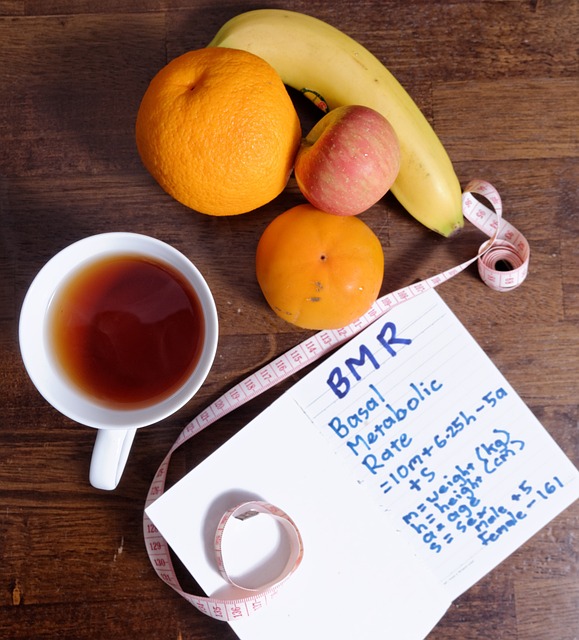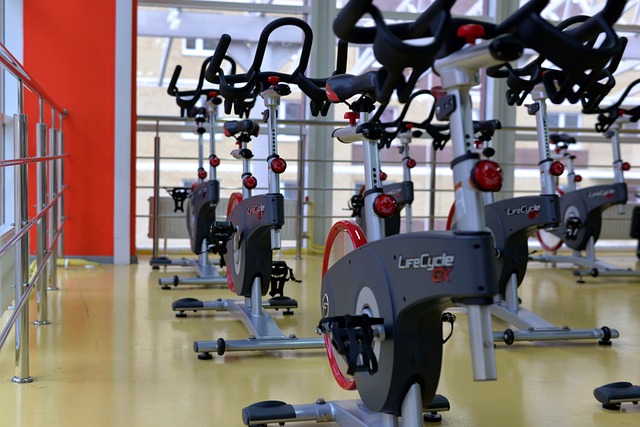Staying motivated to exercise regularly can be a challenging endeavor for many. We all know that regular exercise is crucial for maintaining both physical and mental health, but keeping that motivation alive is often easier said than done.
Exercise isn’t just about looking good; it’s about feeling good too. Engaging in physical activities helps to reduce stress, boost mood, and improve overall well-being. According to the Centers for Disease Control and Prevention (CDC), regular physical activity can help prevent chronic diseases like heart disease, diabetes, and certain cancers.
Despite these benefits, many struggle to maintain a consistent exercise routine. Whether it’s due to a busy schedule, lack of energy, or simply losing interest, the struggle to stay motivated is real. But don’t worry, this article will guide you through practical tips and strategies to help you stay motivated and make exercise a regular part of your life.
Setting Goals
Setting achievable and realistic goals is the cornerstone of staying motivated to exercise regularly. Without clear objectives, it’s easy to lose direction and enthusiasm. Goals provide you with a roadmap, helping you measure progress and celebrate milestones, no matter how small.
The Importance of Setting Achievable and Realistic Goals
When goals are too ambitious, they can lead to frustration and burnout. On the other hand, goals that are too easy won’t challenge you to grow. Striking a balance is key. Achievable and realistic goals keep you motivated, focused, and driven. They also help you to maintain a sense of accomplishment and progress, which is crucial for long-term motivation.
How to Set SMART Fitness Goals
The SMART criteria are a powerful tool for setting effective goals. SMART stands for:
- Specific: Your goal should be clear and specific. Instead of saying, “I want to get fit,” say, “I want to run a 5K in under 30 minutes.”
- Measurable: Ensure your goal can be measured. This could be in terms of time, distance, or repetitions. For instance, “I want to lose 10 pounds in three months.”
- Attainable: Your goal should be realistic and achievable. Setting a target that is too difficult can be demotivating. If you’re new to exercise, starting with a goal like “I want to work out three times a week” is more attainable than “I want to run a marathon.”
- Relevant: Your goal should align with your broader objectives. Ask yourself why this goal is important to you. For example, “I want to improve my cardiovascular health” is a relevant goal if you’re looking to enhance your overall fitness.
- Time-bound: Set a deadline for your goal. A timeframe helps create a sense of urgency and prompts you to stay on track. An example could be, “I want to increase my bench press by 20 pounds in six weeks.”
Examples of Fitness Goals for Different Levels
| Level | Goal |
| Beginner | “I want to walk 30 minutes a day, five days a week for the next month.” |
| Intermediate | “I aim to run a 5K race in under 30 minutes within the next three months.” |
| Advanced | “I want to complete a half-marathon in under two hours within six months.” |
By setting SMART goals tailored to your fitness level, you create a clear path forward. This not only keeps you motivated but also ensures that you are continually progressing and challenging yourself.
Creating a Routine
Establishing a consistent exercise routine is a game-changer when it comes to staying motivated to exercise regularly. A well-structured workout routine not only helps you stay on track but also ensures that you are making steady progress toward your fitness goals.
Benefits of Having a Consistent Exercise Routine
Consistency is key to success in any fitness journey. Here are some benefits of maintaining a regular exercise routine:
- Improved Physical Health: Regular exercise helps improve cardiovascular health, build muscle strength, and enhance flexibility.
- Mental Well-being: Exercise releases endorphins, which can reduce stress, anxiety, and depression.
- Habit Formation: Consistency helps in forming habits that make exercise a natural part of your daily routine.
- Trackable Progress: A routine allows you to monitor your progress and make necessary adjustments to your workout plan.
- Long-term Results: Consistent effort over time leads to significant improvements in fitness levels and overall health.
Tips on How to Create a Workout Schedule That Works for You
Creating a workout schedule that fits your lifestyle is crucial for maintaining consistency. Here are some tips to help you design an effective workout plan:
- Assess Your Current Lifestyle: Consider your daily schedule, work commitments, and personal responsibilities. Find time slots that are convenient for you to exercise.
- Start Small: If you’re new to exercising, start with short, manageable workouts. Gradually increase the duration and intensity as you build stamina and confidence.
- Set a Routine: Allocate specific days and times for your workouts. Treat these sessions as non-negotiable appointments with yourself.
- Mix It Up: Include a variety of exercises in your routine, such as cardio, strength training, and flexibility exercises. This prevents boredom and works different muscle groups.
- Be Flexible: Life can be unpredictable, so it’s important to have a flexible approach. If you miss a workout, don’t stress. Adjust your schedule and get back on track.
- Listen to Your Body: Pay attention to how your body responds to different workouts. Rest and recover when needed to prevent injury and burnout.
The Importance of Incorporating Variety and Flexibility in Your Routine
Variety and flexibility are essential components of a successful exercise routine. Here’s why:
- Preventing Plateaus: Continuously challenging your body with new exercises helps prevent fitness plateaus and keeps progress steady.
- Maintaining Interest: Trying different workouts keeps things exciting and prevents monotony. This can include activities like yoga, swimming, cycling, or dance classes.
- Adapting to Changes: Flexibility in your routine allows you to adapt to changes in your schedule, energy levels, and fitness goals.
Incorporating variety and flexibility not only enhances your physical fitness but also keeps you mentally engaged and motivated to continue your fitness journey.
Finding Motivation
Staying motivated to exercise regularly can be challenging, but understanding the different sources of motivation can make a significant difference. Motivation can be broadly categorized into two types: intrinsic and extrinsic. Let’s explore these sources and how you can leverage them to stay committed to your fitness goals.
Intrinsic vs. Extrinsic Motivation
Intrinsic motivation comes from within. It’s the internal desire to achieve something because it brings personal satisfaction or joy. On the other hand, extrinsic motivation is driven by external factors, such as rewards or recognition.
| Type of Motivation | Description | Examples |
| Intrinsic | Internal drive to achieve a goal for personal satisfaction. | Enjoying the feeling of accomplishment after a workout, loving the activity itself, or feeling healthier and more energetic. |
| Extrinsic | External rewards that incentivize achieving a goal. | Receiving compliments, earning a reward for reaching a milestone, or participating in a fitness challenge with friends. |
Identifying Your Personal Motivators
Understanding what drives you personally can help you stay motivated. Here are some steps to identify your personal motivators:
- Reflect on Past Successes: Think about times when you felt highly motivated. What were the factors that drove you? Was it the desire to improve your health, feel more confident, or achieve a specific fitness milestone?
- Set Clear Goals: Having a clear vision of what you want to achieve can be a powerful motivator. Whether it’s losing weight, building muscle, or simply feeling more energetic, knowing your “why” can keep you focused.
- Consider Your Preferences: Choose activities you genuinely enjoy. If you love dancing, join a dance class. If you prefer the outdoors, consider hiking or cycling.
Ways to Keep Motivation Levels High
Maintaining high motivation levels requires a combination of strategies. Here are some effective ways to keep your motivation strong:
- Rewards: Set up a reward system for yourself. For example, treat yourself to a massage, a new workout outfit, or a fun outing after reaching a fitness milestone.
- Accountability Partners: Having someone to share your fitness journey with can be incredibly motivating. Find an accountability partner or join a fitness group to keep each other on track.
- Positive Self-Talk: Your mindset plays a crucial role in maintaining motivation. Practice positive self-talk and remind yourself of your progress and achievements. Replace negative thoughts with affirmations like “I am strong,” “I am capable,” and “I am making progress.”
- Visualize Success: Visualization can be a powerful tool. Picture yourself achieving your fitness goals and how it will feel. This mental imagery can boost your motivation and keep you focused.
- Track Your Progress: Keep a journal or use a fitness app to track your workouts and progress. Seeing how far you’ve come can be a great motivator.
By understanding your motivators and employing strategies to keep your motivation high, you can stay committed to your fitness journey and achieve your goals.
Overcoming Challenges
Staying motivated to exercise regularly isn’t always easy, especially when life throws various obstacles in your path. Common challenges such as lack of time, energy, or resources can make it difficult to maintain a consistent workout routine. However, with the right strategies, you can overcome these hurdles and stay on track with your fitness goals.
Common Challenges and Practical Solutions
Let’s take a closer look at some of the most frequent challenges and how you can tackle them effectively:
| Challenge | Description | Solution |
| Lack of Time | Busy schedules often leave little room for exercise. | · Schedule Workouts: Treat your workouts like important appointments. Block out specific times in your calendar dedicated to exercise.
· Short and Efficient Workouts: Opt for high-intensity interval training (HIIT) or quick 20-minute workouts that can be done anytime, anywhere. |
| Lack of Energy | Feeling tired or fatigued can diminish your motivation to exercise. | · Exercise at Optimal Times: Identify the times of day when you have the most energy and schedule your workouts during those periods.
· Prioritize Sleep and Nutrition: Ensure you are getting adequate sleep and eating a balanced diet to maintain energy levels. |
| Lack of Resources | Limited access to gyms or exercise equipment can be a barrier. | · Utilize Bodyweight Exercises: There are numerous effective bodyweight exercises that require no equipment, such as push-ups, squats, and planks.
· Explore Online Resources: Take advantage of free workout videos and fitness apps available online. |
Staying Persistent Through Obstacles
While it’s normal to encounter challenges, the key to success is persistence. Here are some tips to help you stay dedicated to your fitness journey:
- Set Realistic Expectations: Understand that progress takes time and setbacks are a part of the process. Setting realistic expectations can help you stay motivated.
- Focus on Small Wins: Celebrate small victories along the way. Each accomplishment, no matter how minor, is a step towards your larger goal.
- Seek Support: Surround yourself with a supportive community. Whether it’s friends, family, or a fitness group, having a support system can keep you motivated.
- Keep a Positive Mindset: Maintain a positive outlook and remind yourself of your reasons for exercising. Positive affirmations and visualizing your success can be powerful motivators.
Overcoming challenges is an integral part of any fitness journey. By implementing practical solutions and staying persistent, you can navigate obstacles and continue moving towards your fitness goals. Remember, every challenge you overcome makes you stronger and more resilient.
Staying Consistent
Consistency is the cornerstone of any successful fitness journey. It’s not about doing the most intense workouts every day, but rather about forming habits that you can maintain over the long term. Understanding the concept of habit formation and applying it to your exercise routine can make all the difference.
Understanding Habit Formation
Habit formation is the process by which behaviors become automatic through repetition. According to research, it takes an average of 66 days to form a new habit. When it comes to exercise, the goal is to make working out a regular part of your lifestyle rather than a sporadic activity.
Here are the key stages of habit formation:
- Cue: A trigger that initiates the behavior. For example, setting an alarm to remind you it’s time to workout.
- Routine: The behavior itself, such as performing your exercise routine.
- Reward: The positive reinforcement you get from completing the behavior, like the satisfaction of a completed workout or the endorphin rush.
By consistently following these stages, you can create a sustainable exercise habit.
Tips for Staying Consistent
Here are some practical tips to help you stay consistent with your exercise routine:
- Track Your Progress: Use a fitness journal, app, or calendar to log your workouts. Tracking your progress can provide a sense of accomplishment and motivate you to keep going.
- Celebrate Small Victories: Recognize and celebrate your achievements, no matter how small. Whether it’s completing a week of workouts or reaching a new personal best, celebrating these milestones can boost your motivation.
- Seek Support: Engage with a fitness community, find a workout buddy, or hire a personal trainer. Having support from others can keep you accountable and encouraged.
- Set Realistic Goals: Ensure your goals are achievable and aligned with your current fitness level. Setting unrealistic goals can lead to frustration and burnout.
- Mix It Up: Incorporate variety into your workouts to prevent boredom and keep things interesting. Try different types of exercises, such as cardio, strength training, yoga, or dance.
- Stay Flexible: Life happens, and sometimes you may need to adjust your routine. Be flexible and adapt when necessary, but strive to get back on track as soon as possible.
The Power of Consistency
Consistency is key to seeing results. It’s the small, consistent efforts that add up over time to create significant changes. Remember, it’s not about being perfect, but about making progress and staying committed to your goals.
Here are some benefits of staying consistent with your exercise routine:
| Benefit | Description |
| Improved Fitness | Regular exercise helps build strength, endurance, and flexibility. |
| Mental Health | Consistent physical activity can reduce stress, anxiety, and depression. |
| Habitual Lifestyle | Establishing a routine makes it easier to maintain long-term healthy habits. |
| Visible Results | Consistency leads to noticeable improvements in physical appearance and performance. |
By incorporating these strategies and understanding the importance of consistency, you can stay motivated and committed to your exercise routine. Remember, every step you take brings you closer to your fitness goals.
Conclusion
In this article, we explored numerous strategies to help you stay motivated to exercise regularly. Let’s recap the main points:
- Setting Goals: Establishing SMART fitness goals that are specific, measurable, attainable, relevant, and time-bound.
- Creating a Routine: Developing a consistent workout schedule that fits your lifestyle while incorporating variety and flexibility.
- Finding Motivation: Identifying personal motivators and utilizing sources of motivation, such as rewards, accountability partners, and positive self-talk.
- Overcoming Challenges: Recognizing common obstacles and implementing practical solutions to stay on track.
- Staying Consistent: Understanding habit formation and following tips to maintain consistency in your exercise routine.
Staying motivated to exercise regularly is crucial for both your physical and mental well-being. By applying the tips and strategies discussed in this article, you can overcome challenges and stay committed to your fitness goals.
Remember, every small step counts. Celebrate your progress, stay flexible, and seek support when needed. Consistency is key, and with determination, you can achieve the results you desire. Keep moving forward and enjoy the journey to a healthier, happier you!












